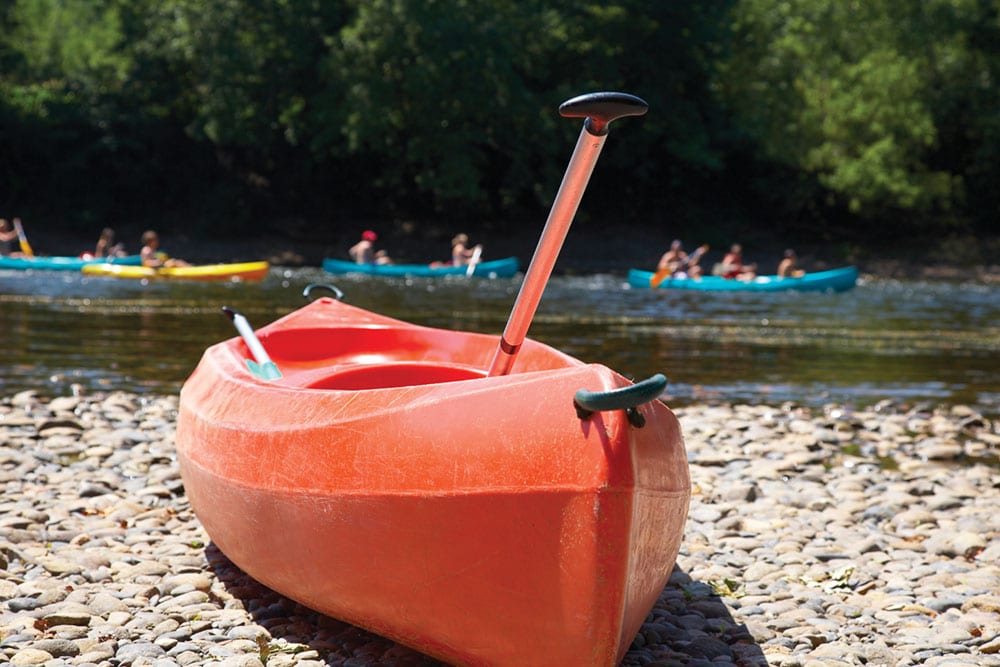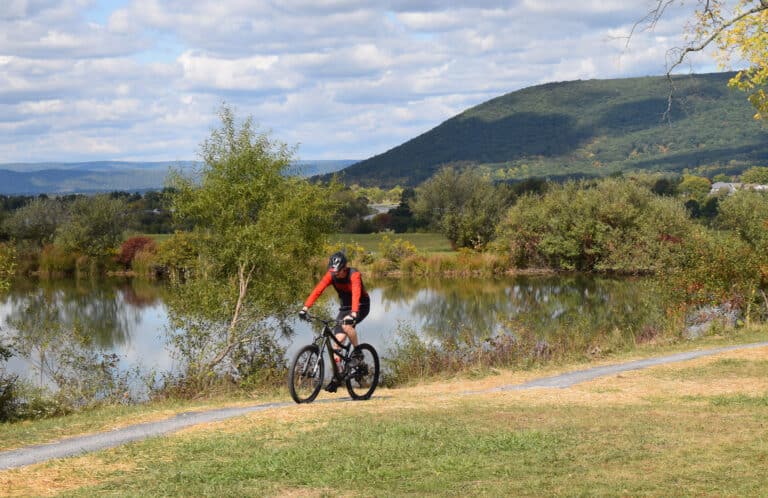Three whitewater paddling routes that are bound to get beginners hooked.
Rushing water, jagged rocks, and waterfall descents—whitewater paddling is often chased by the most hardcore adrenaline junkies. But what about those who want to try hopping in a vessel and pouncing through the swells? Across our region there are countless rivers to choose from, ranging in difficulty, length, and scenery. These routes in the Appalachians are great spots for a family day trip or the beginner looking to get hooked.
Little Tennessee River, North Carolina
- Difficulty: Easy
- Class of Rapids: I-III
- Route Length: 23 miles
This playful, calm stretch of the Little Tennessee River is known for crystal clear waters and unparalleled scenic beauty as it winds through Macon and Swain counties. Flowing from its headwaters in Chattahoochee National Forest, the Little Tennessee meanders north into Great Smoky Mountains National Park. With over 100 species of fish beneath your boat and over 3,000 species of plants along the banks, this section flows through one of the most biodiverse areas in the Southeast.
The route takes you from the launch point right off of Highway 28, just north of Franklin, 23 miles north to Highway 19, just as the river feeds into Fontana Lake. There are ample camping opportunities in Nantahala National Forest right along the banks of the river, so this route would make an excellent overnight trip, especially given its length. This area is very remote and you won’t see many roads along the route, so make sure to have all the provisions you need to have a safe trip.
Cherry River, West Virginia
- Difficulty: Easy to intermediate
- Class of Rapids: II-III
- Route Length: 9 miles
As paddlers navigate the Cherry River, winding through Monongahela National Forest in the Allegheny Mountains, they’ll get a run of nonstop action. During this nine-mile stretch, you can expect to continuously interact with eddies, holes, and various rock formations that will keep you alert and on your toes. While the rapids are more or less continuous, they stay within the II to III class level so there aren’t any big surprises.
A tributary to the famous rushing white waters of the Gauley River in West Virginia, the Cherry is a more forgiving body of water to the beginner paddler. In addition to the surrounding natural beauty, you’ll paddle through Richwood, a small town in historic Nicholas County, whose residents regularly watch paddlers float along. Though the route can be completed in an afternoon, the camping options along the river make it worth it to pack for a night. And even though the Cherry is easier to navigate than other nearby whitewater destinations, beginners should be advised to not hit it solo. The steady challenge of the Class II-III rapids offer a great opportunity to learn from a guide or a more experienced paddler how to navigate consistently challenging waters.
The route starts at a put in just across from the WaterGate Inn in Richwood and flows to the mouth of the Gauley—a world-class river with big water that should be an aspiration for learning boaters.
Hiwassee River, Tennessee
- Difficulty: Easy
- Class of Rapids: Class I-II
- Route Length: Varies
Just an hour from Chattanooga and 1.5 hours from Knoxville, the Hiwassee River is a beginners’ paradise. The gentle ripples allow for multi-vessel use, including kayaks, canoes, tubes, and paddleboards, and generally all ages can enjoy paddling along this peaceful, scenic river.
Designated as a Tennessee State Scenic River, the Hiwassee flows through the Cherokee National Forest. Adapted from the Cherokee word “Ayuhwasi,” the river has a rich cultural history. Along with its tributaries, the Hiwassee was home to many Cherokee towns and served as a key trade route among Native Americans from villages in the mountains of North Carolina into the foothills of eastern Tennessee.
Hiwassee Outfitters in Reliance, Tenn., offers kayak rentals and shuttles for a self-guided 5.5-mile stretch of the river that features mostly class I-II rapids before finishing with the class III run, Devil’s Shoals.
If you plan your own trip, note the river level is controlled by the Tennessee Valley Authority’s Appalachia Dam. Water release schedules can vary seasonally and will greatly affect the level and flow rate of the water, so check release schedules and adhere to all posted signage in order to stay safe.
You can scout for up-to-date river condition on American Whitewater’s website: americanwhitewater.org.







